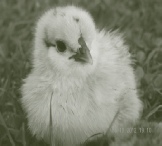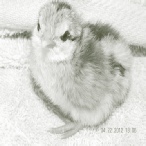BASIC DEFINITIONS
Setting Eggs: This is done to allow your eggs to sit in one spot without moving them due to rough handling or traveling when eggs are delivered. Procedure is positioning the eggs with big end UP and no moving or touching them for a length of time.
Candling Eggs: Using a bright device such as, LED flashlight or camera phone flash to shine through the Larger or Big end of the egg. My preference for this is downloading a Free app called “flashlight”, the program uses your phone Camera Flash as a Very Bright Flashlight.
Air Cell: The opened space inside the shell of an egg. This usually can be found at the Large or Big end of the egg.
Loose Air Cells (saddle): When candling the air cell moves out of place but does NOT move away from the big end or the top of the egg. To determine this, candle the egg from the large or big end of the shell and rock the egg back and forth, a loose air cell will move but will not wonder throughout the entire egg.
Detachable Air Cells: The air cell has broken free from the large or big end of egg and is able to move freely inside of the egg. This can been seen by candling the egg, a bubble usually will appear, this bubble will stay at the top no matter what position you may have the egg in.
Sponging/Misting: Sponging is taken a sponge soaked in water used to touch each egg allowing water to dribble down the sides of it, providing moist or humidity. Misting is using a spray bottle filled with water and squirting each egg.
Upside Downers: The Embryo’s head is at the little end of the shell and can not turn around to get into hatching position. The correct position should be when the head is towards the large or big end of the air cell and the beak is visible by candling.
Safe Hole: A small hole made at the large or big end, where the air cell is, this hole is no bigger then the tip of a pen point. To large of a hole will cause shrink wrap and can end the process. This hole is made to help the baby duck or chick, giving them air to breath,. This is ONLY used when process has taken a day or two and embryo has made little or no progress but is still alive..
Shrink Wrap: When to much air has entered into the shell causing the membrane that is covering the baby duck or chicken to shrivel up, constricting the baby and making it difficult or impossible to get out, intervening is NECESSARY.
Sticky Embryo: Usually caused by high humidity or to much moist during incubating. However there are four main factors for causing sticky babies 1. High humidity. 2. Temp to low during the process, 3. Poor circulation, lack of oxygen getting in and out of the shell, 4. Contamination, an uncleaned incubator can cause bacteria which will end the process as well as cause other issues. When this happens you’ll usually see a thick yellow, gooey substance will confine the embryo from growing or being able to reach the air cell causing them to suffocate, intervene is necessary. There’s a 50/50 chance of the baby chick surviving and zero chance if you don’t intervene.
Back: Method One - Method Two - Method Three
Contact me with any questions at 330-805-9705 or email: lwbarnhouses@gmail.com



























